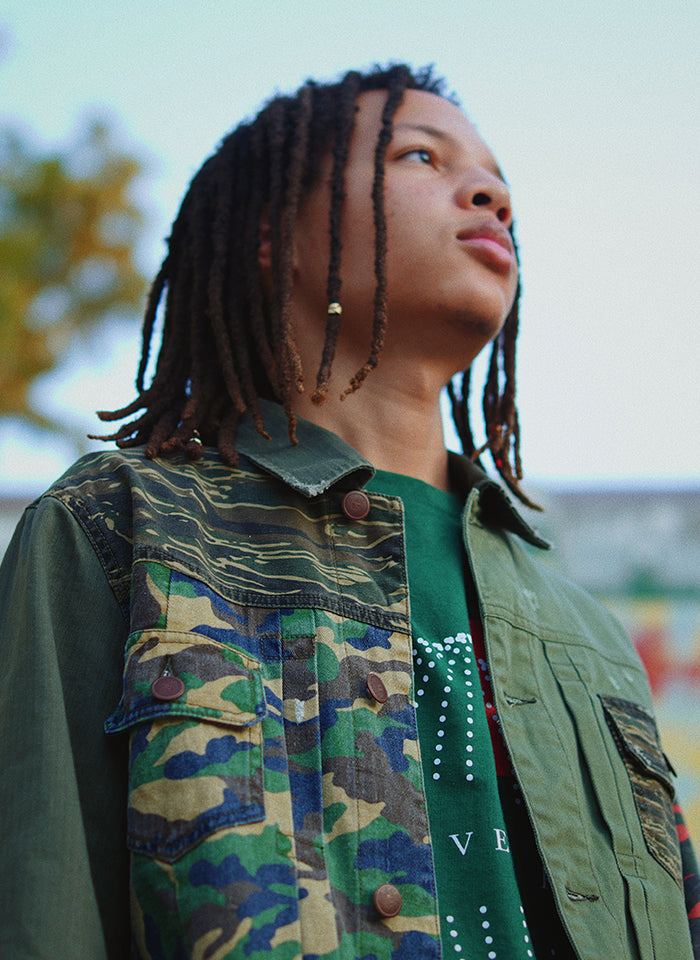Article: Rearticulating Black Masculinity Transcends Ideology and Enters Fashion

Rearticulating Black Masculinity Transcends Ideology and Enters Fashion
By Summer J. Robinson
The mainstream Western image of Black men portrays Black men as thugs and criminals in America and savages and warlords in parts of Africa and around the world. These images are portrayed in photography, film, television, and the news, not only impacting how much of the world views Black men but also how some Black men view themselves and each other. Dandyism has changed that narrative. In fact, Dandyism has reclaimed a narrative that always existed, but was overlooked by mainstream Western media and fashion. A dandy is defined as a man who takes particular interest in physical appearance and all-things leisurely. It is a term that reportedly first appeared in late eighteenth, early nineteenth century Britain. Some reports describe dandy men’s interest in aesthetics and self-appearance as almost obsessive and narcissistic. This is not at all what dandyism, or better yet, a Dandy Lion, is today. Black Dandyism is a style that intersects refined Western fashion with traditional African accents through fabrics, textiles, and/or patterns. It is also a combination of European styles such as bowties with a more contemporary, hip-hop influenced fashion.
The Dandy Lion Project was curated by New Orleans native, Shantrelle P. Lewis in 2010. The project expanded to a traveling exhibition and a book from her research concerning Black men in urban communities around the world’s utilization of fashion in their everyday lives. Dandyism is essentially the utilization of various elements of fashion to reclaim the identities of Black men and showcasing Black masculinity as something that is not monolithic, but in fact multifaceted and diverse. Lewis considers the style to be “oppositional fashion”, meaning that it is a style of urban Black men within the diaspora that counters that image of Black men who solely wear white tees and sagging pants. Fashionable Black men have always been around. You can find pictures of elegantly-dressed Black men from the early 1900s, the Europeans just happened to coin a term for it. Remember the zoot suites and the styles of Black men during the Harlem Renaissance?
In an interview with Paper magazine, Shantrelle P. Lewis sums up Dandyism, “We saw dandyism touted by individuals such as Frederick Douglass and later W.E.B. Du Bois. I think in an earlier era, it was deeply rooted in respectability. It then reflected scholastic rigor and self- respect - think Malcolm X and his sharp suits or James Baldwin. Today, dandyism is a more recent manifestation of hip hop culture. Black dandies are using hip hop methods of sampling to mix styles and articles of clothing from different eras and cultures to articulate statements of Black masculinity and individuality.” So this is certainly not a new style and not a style exclusively exhibited by African American men. In fact, Dandyism is expressed by Black men across the diaspora in the United States, the United Kingdom, the Congo, and South Africa.
Dandyism is far more than wearing colorful, tailored suites with energetic patterns, it is about utilizing fashion to make a political statement. We live in a time where the identities of marginalized communities, specifically Black men in this case, are consistently attacked and policed. It goes beyond politics and policies.
Remember H&M’s “Coolest Monkey in the Jungle” stunt?
Black men have found a way to use fashion to reclaim their identities and how the media and the world at large sees them. This is also being seen in movements such as #Blackboyjoy and #Blackmensmile.
Black men are far beyond letting the world decide how they look and who they are.


